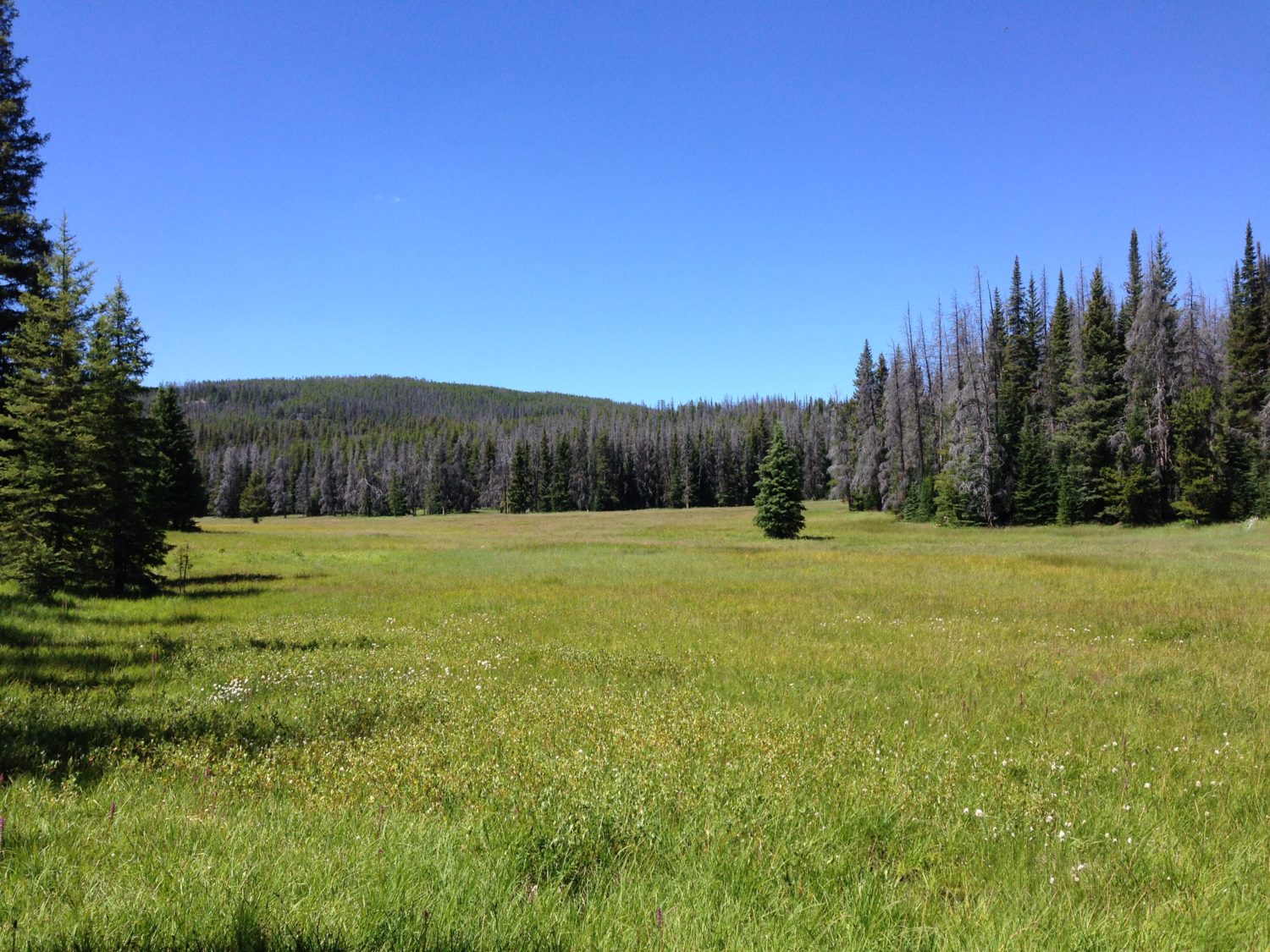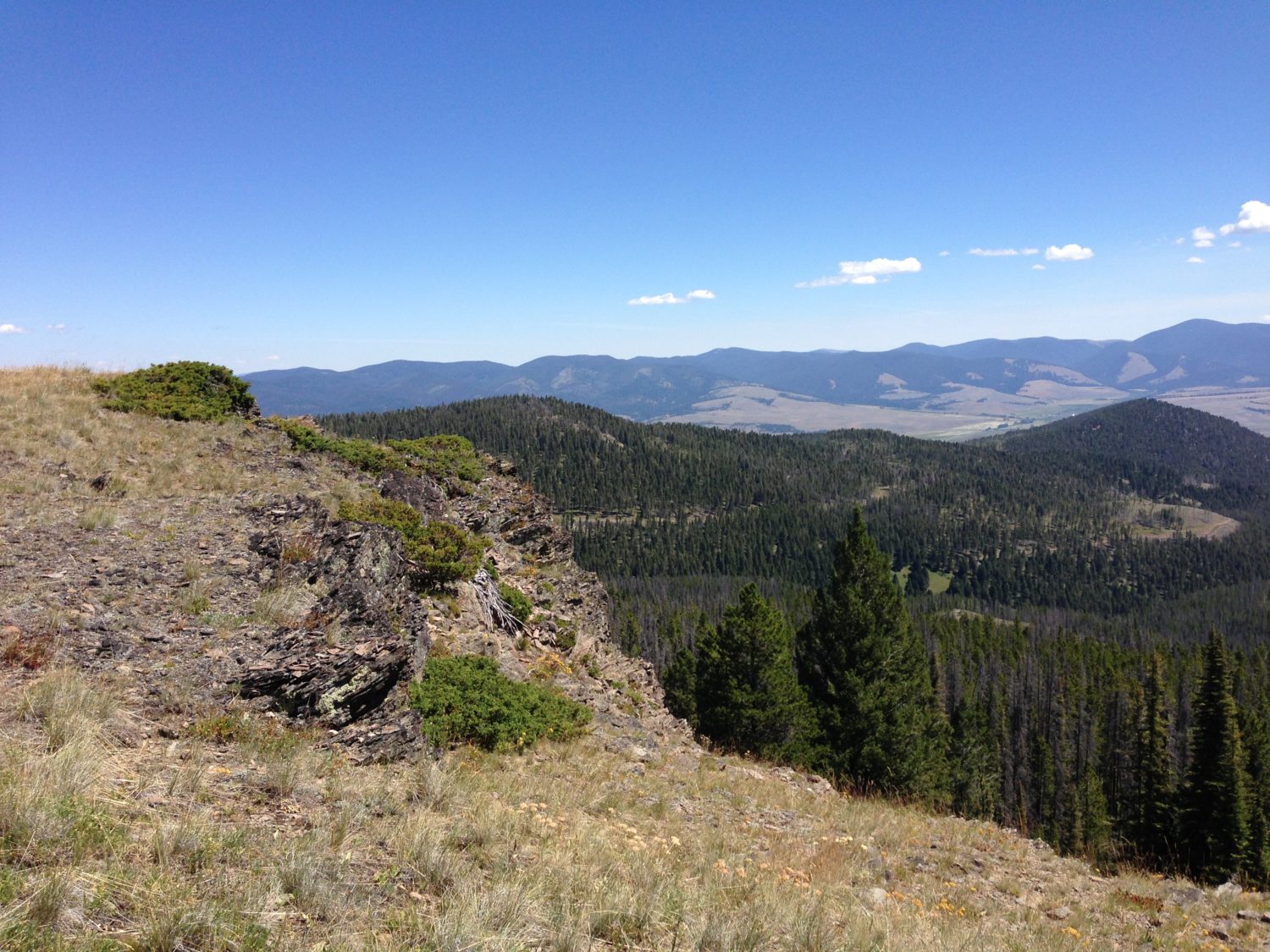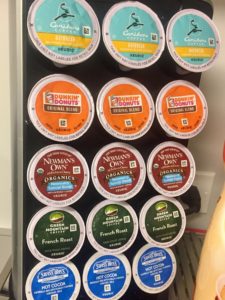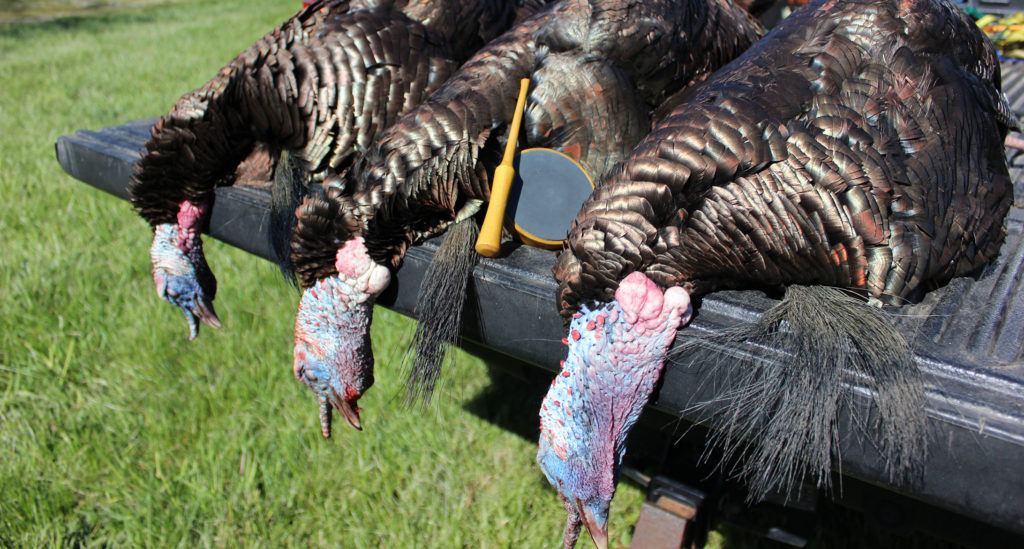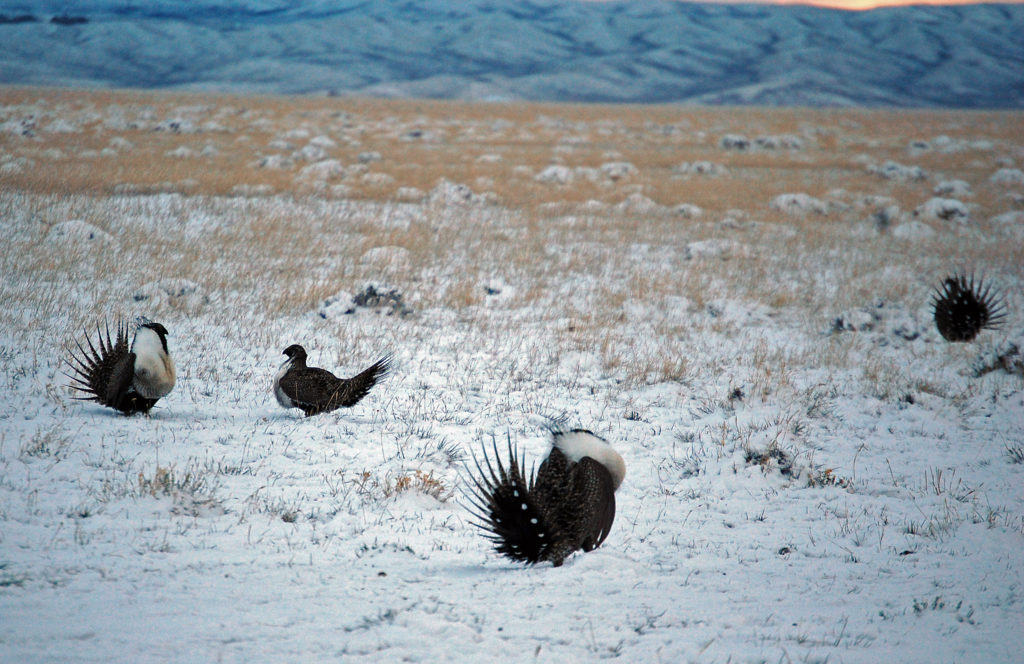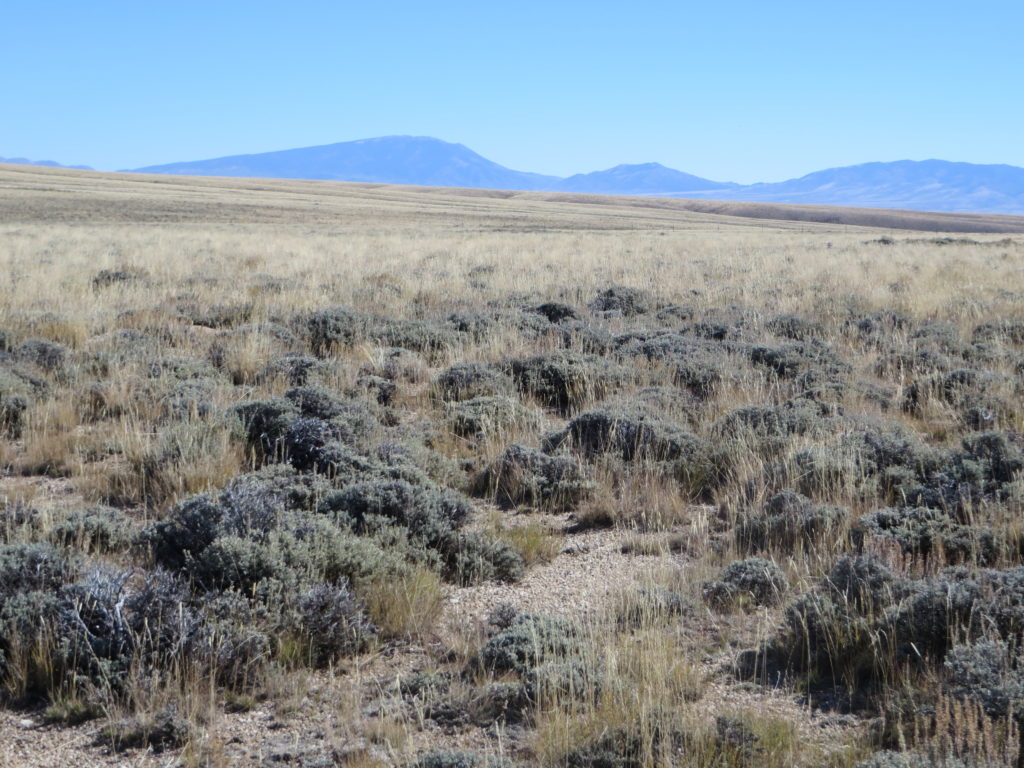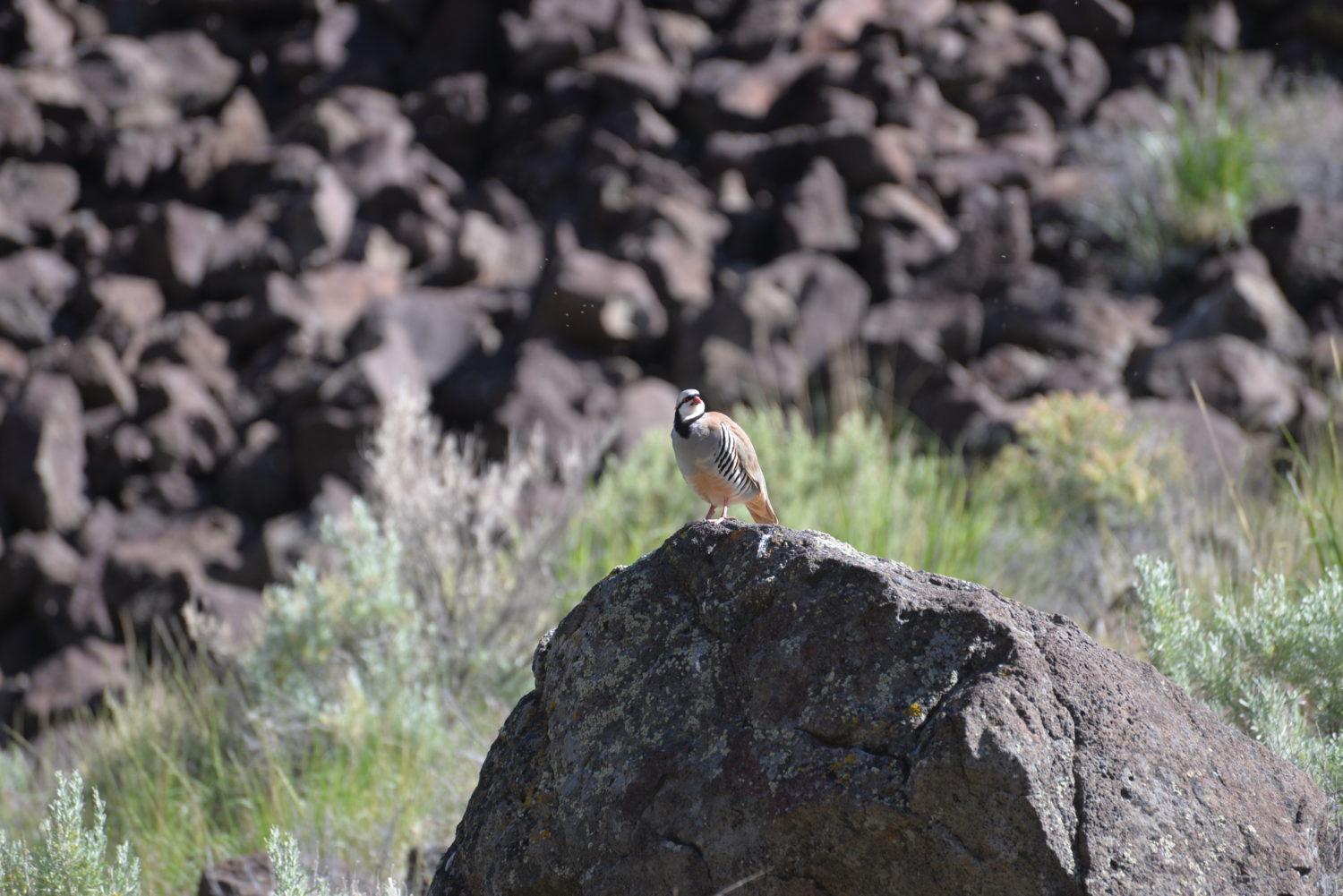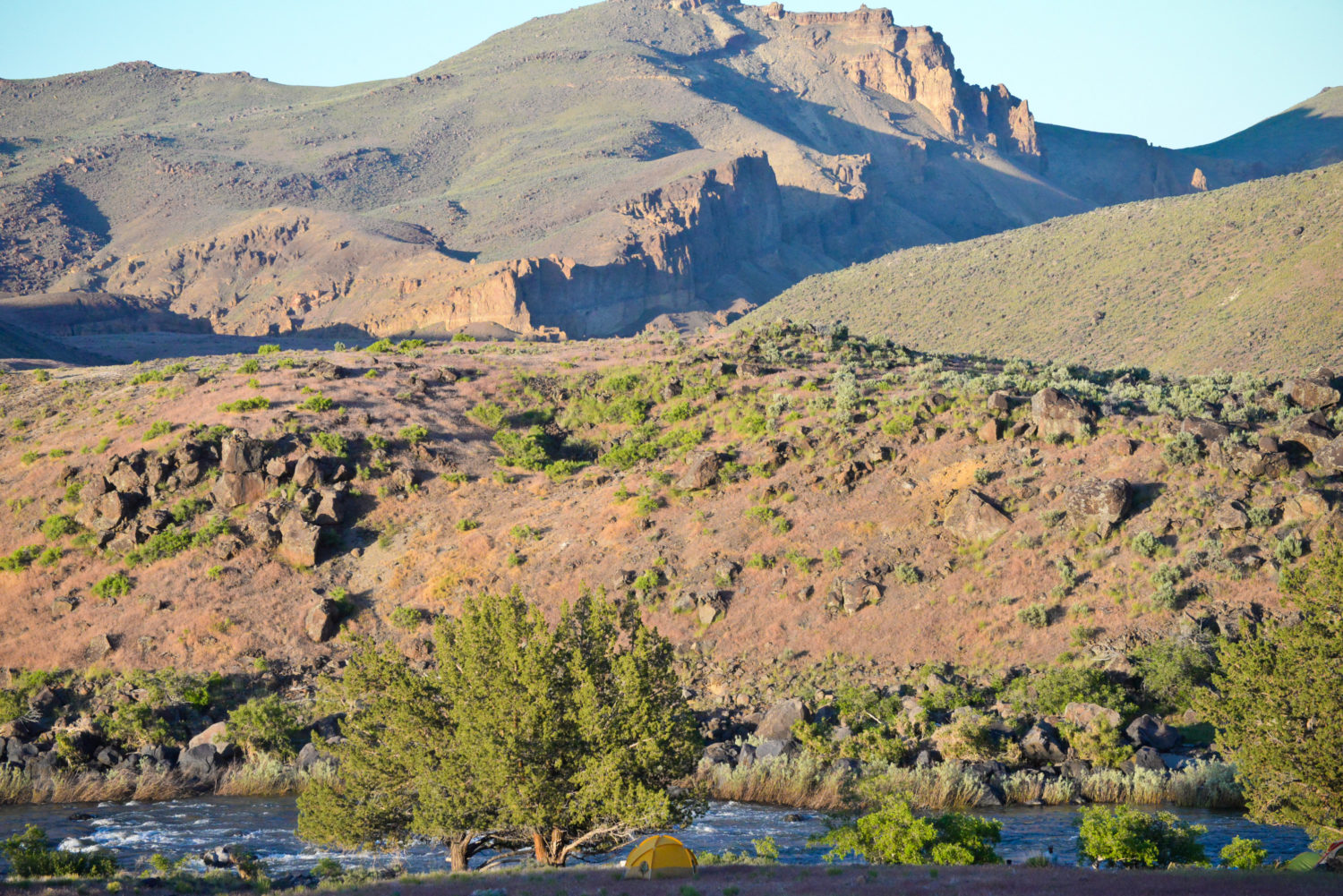Think the Farm Bill doesn’t affect habitat or clean water where you live? Check out these maps
Recently, we highlighted on the blog how the Farm Bill, which may be most familiar to agriculture-minded folks in the Midwest, helps the greater sage grouse, one of our most iconic and imperiled Western game species. It drew attention to the fact that some people might not be aware that the Farm Bill touches down in all corners of the country.
But if we’re going to get Congress to pass a new Farm Bill that helps to guarantee all Americans quality places to hunt and fish, we’ll need every hunter and angler to engage with their elected officials about the programs that matter in the places where they live and spend time outdoors.
One of our goals at TRCP is to educate sportsmen and women on the key conservation provisions of the 1,000-page, trillion-dollar Farm Bill, so we put together a primer on where Farm Bill conservation touches down. Think your area isn’t affected by Farm Bill conservation, because there isn’t eye-high corn in view? Think again.
Congress must write a new #farmbill that helps guarantee Americans quality places to hunt and fish #crpworks #originalconservationists Click To TweetConservation Reserve Program
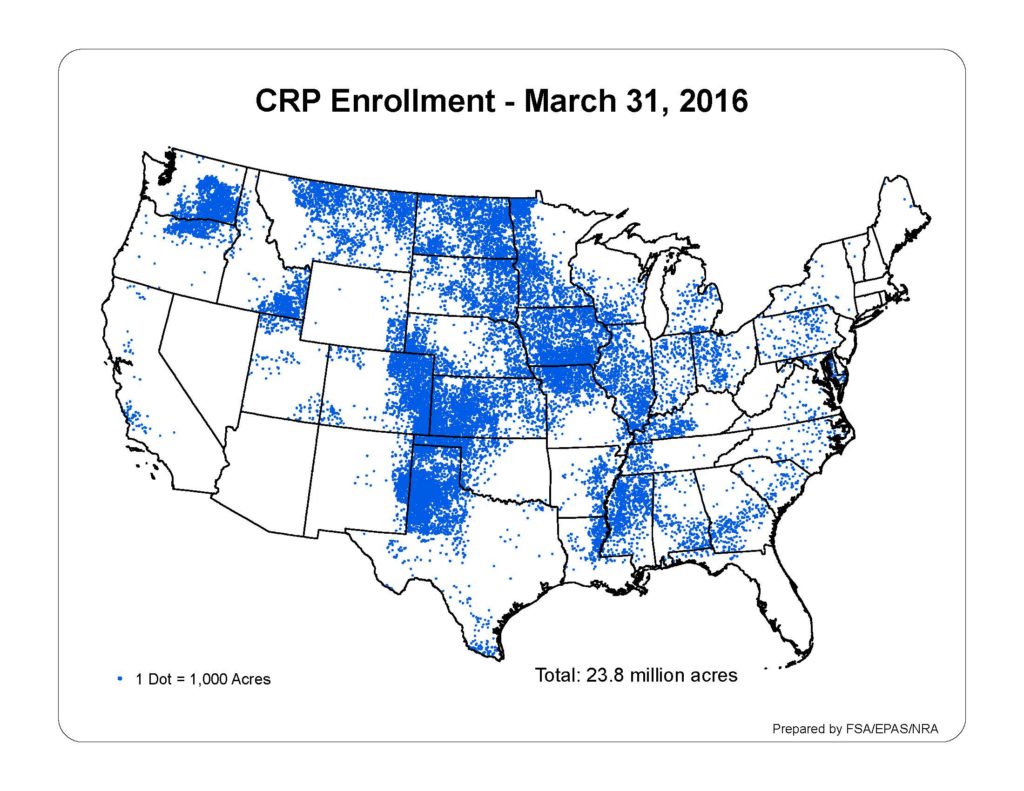
Over the last three decades, it has been proven that the Conservation Reserve Program works for wildlife, water quality, agricultural producers, and sportsmen. You may not be in a major CRP state like Iowa, Kansas, or the Dakotas, but check out whitetail country in Pennsylvania and the major clutch of CRP acres around eastern Washington’s lakes. Your hunting and fishing is benefiting from conservation improvements on private lands wherever you see a dot of blue on this map.
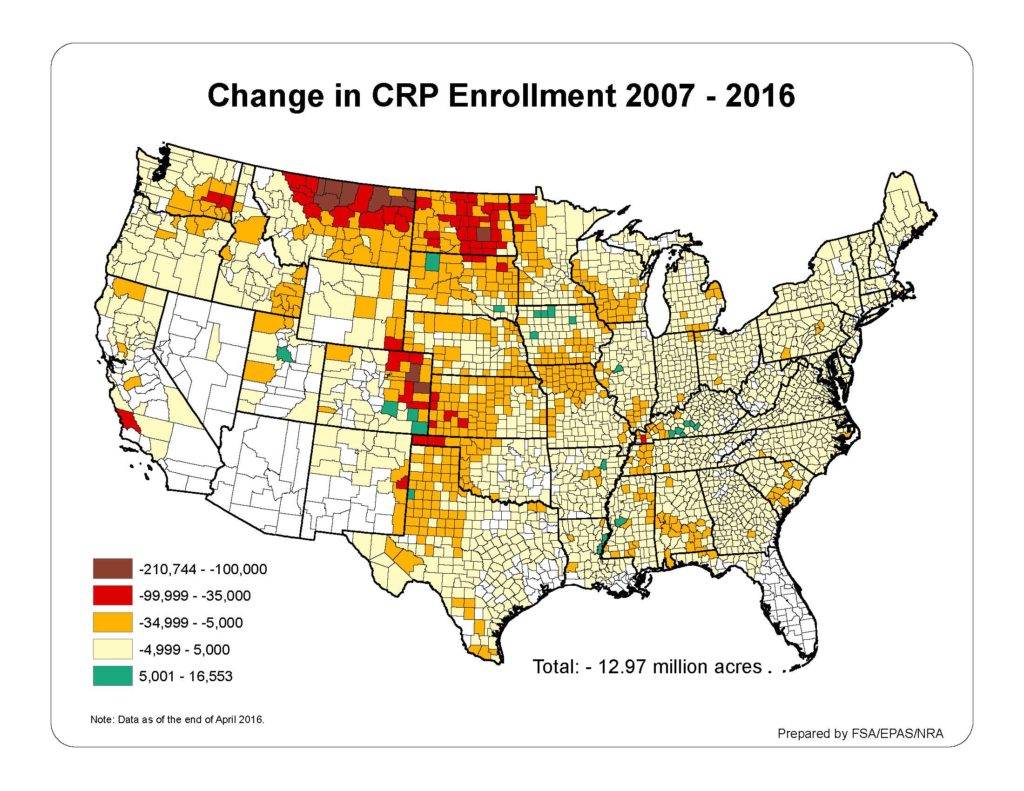
Unfortunately, the current breadth of CRP is far less than we used to have. Is your town on this map, but not the one above? Then you’ve lost CRP’s benefits. Around 2007, crop prices started to rise dramatically, and landowners began to choose crops over habitat—now, nearly 13 million acres of CRP grasslands, wetlands, and forests have disappeared from the landscape, the vast majority of which were lost in hunting strongholds like Montana, North Dakota, and Colorado. If you have a minute, go to our petition at CRPworks.org and tell Congress that you want to see these acres restored to the land.
Easements
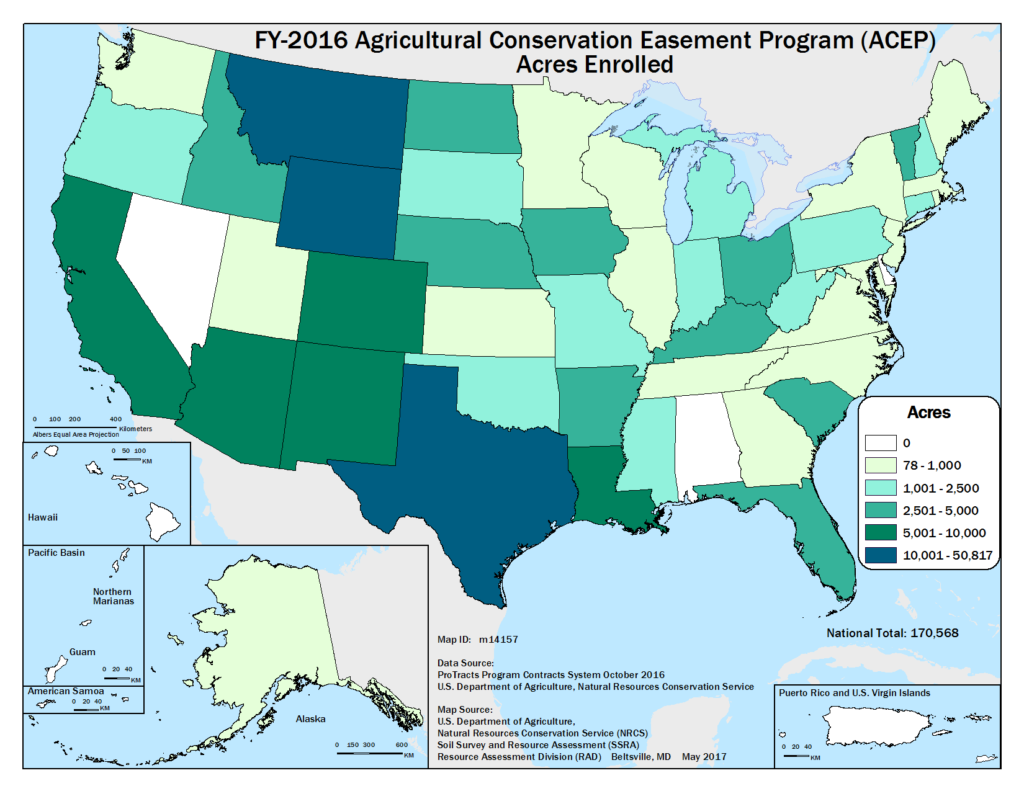
Long-term easement agreements under the Farm Bill’s Agricultural Conservation Easement Program support the voluntary restoration, protection, and enhancement of wetlands and forests, while protecting working agricultural lands from subdivision and development. If your region is on this map, you’re lucky to have easement acres in the mix to benefit critters, water quality, and rural areas. For instance, states like Texas, Wyoming, and Montana are leading the drive for private ranchland protection on an acre-by-acre basis.
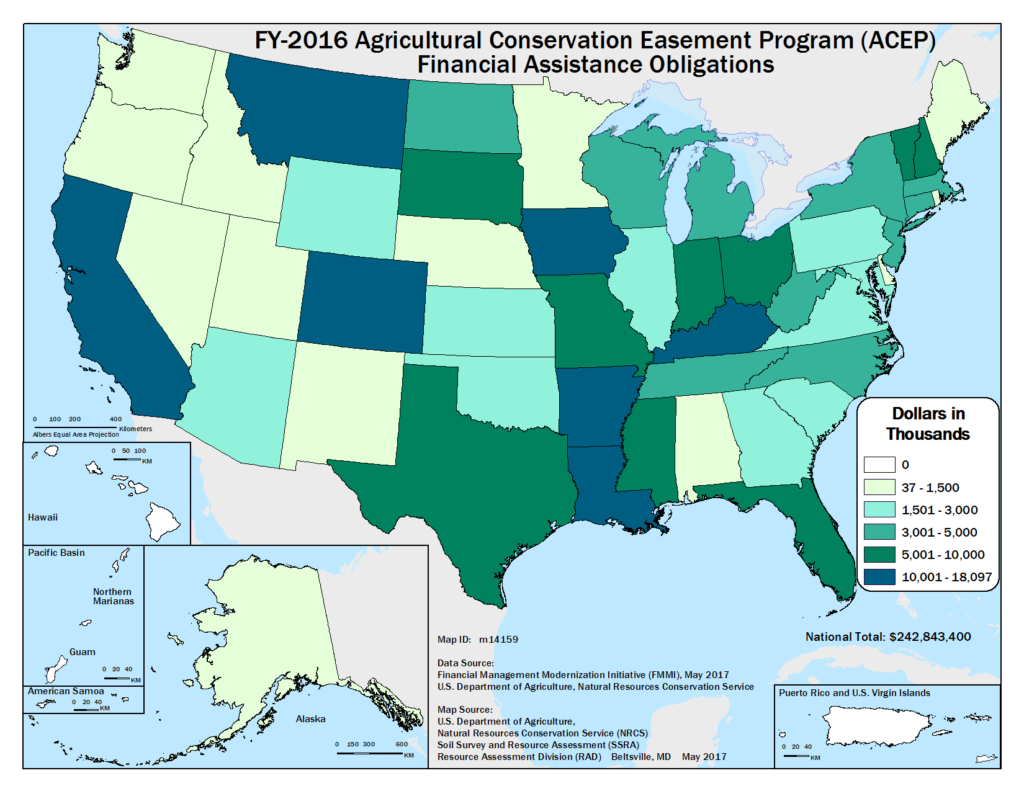
But the states getting the most dollars include Iowa and Louisiana, where farmland and wetlands in expensive, highly-developed areas are in great need of protection. Landowners in those regions need more money to conserve even very small areas, and the Farm Bill is critical to making this happen.
Regional Partnerships
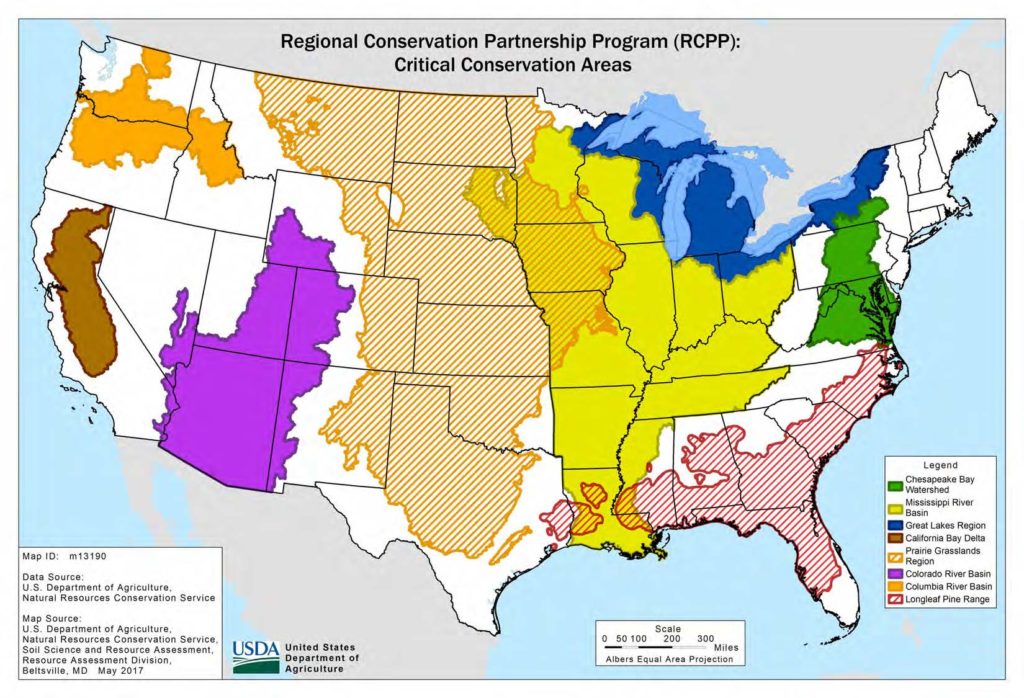
Public-private partnerships that work through the Farm Bill’s Regional Conservation Partnership Program coordinate conservation projects across landscapes, rather than incentivize a thousand random acts of conservation here and there around the country. RCPP was designed in part to focus on eight Critical Conservation Areas, which line up with areas TRCP and our partners care deeply about, including the Chesapeake Bay Watershed, Mississippi River Basin, Prairie Grasslands Region, and Colorado River Basin.
These focus landscapes encompass more of the country than you think—for example, the Chesapeake Bay Watershed stretches far outside of Maryland. (In fact, the health of the Bay’s rockfish fishery partly depends on farms in rural Pennsylvania.) RCPP helps incorporate the farthest reaches of these CCAs into more cohesive conservation plans.
Conservation on Working Lands
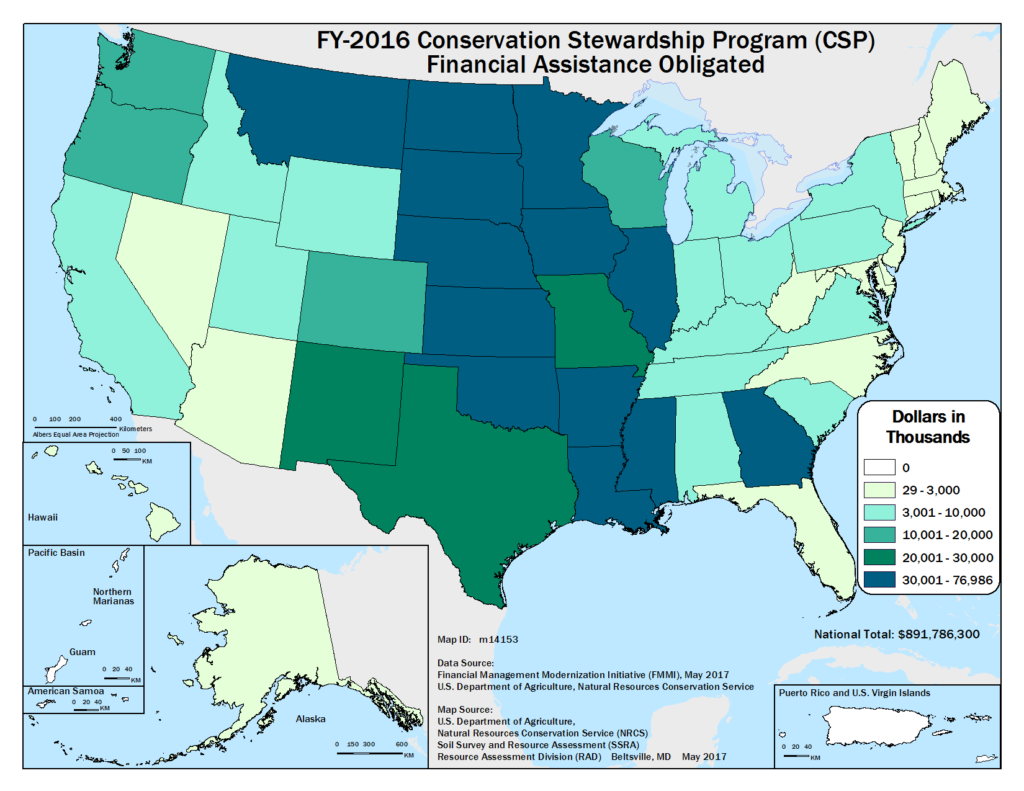
Working lands programs in the Farm Bill, like the Conservation Stewardship Program and Environmental Quality Incentives Program, provide financial assistance to landowners to improve habitat, reduce erosion, and prevent nutrient pollution on lands that are in active crop production, grazing, and forestry. CSP and EQIP were two of the best-funded conservation programs in the 2014 Farm Bill—combined they put more than $2.5 billion in projects on the ground in 2016.
CSP funding is highly targeted to the Midwest and Plains states. In fact, the pheasant capital of the U.S. in South Dakota—also home of the World’s Only Corn Palace—comes out on top at $93 million.
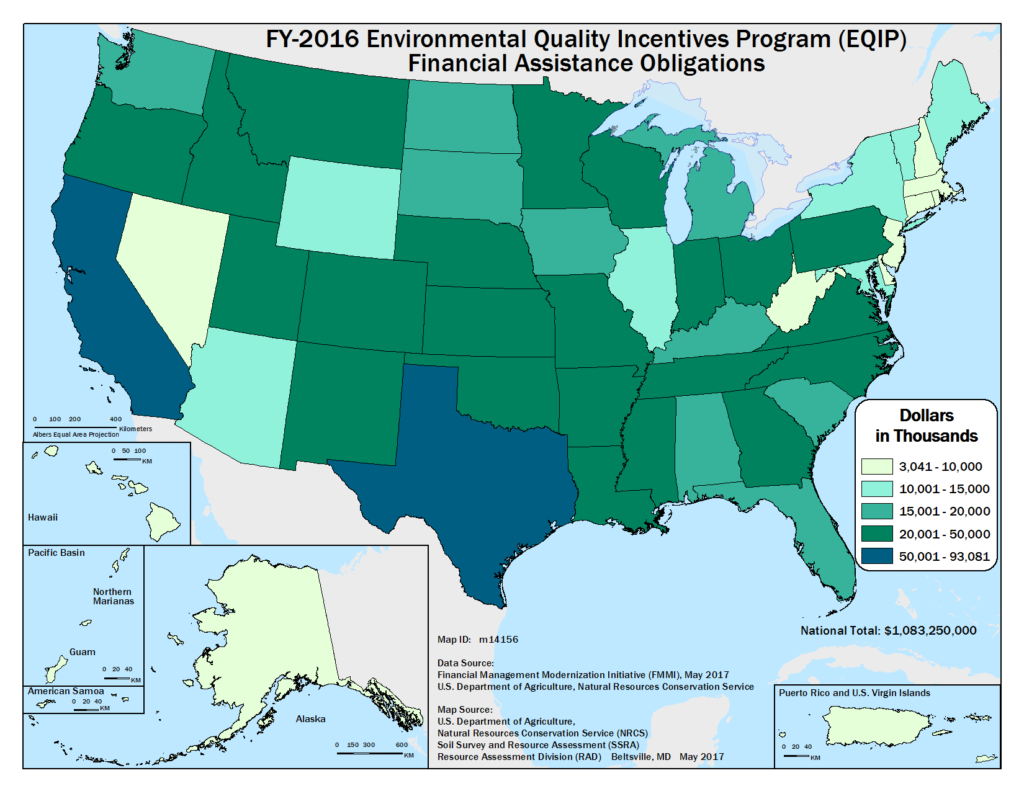
But EQIP dollars have a much more balanced distribution across the country. California and Texas take the prize for top dollar thanks to sheer size, but other sportsmen-friendly states like New Mexico and Arkansas also rank very high for number of contracts and acres. If your state is in deep green on the map, it’s a good bet that agricultural producers are working to make your waterways just as vibrant as their farms.
Public Access on Private Lands
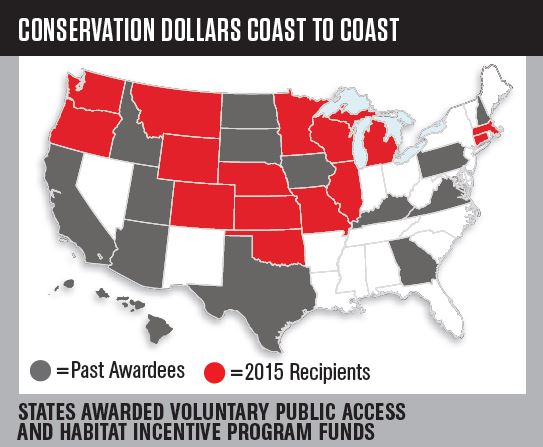
Through 2015 (the last time USDA offered up these program funds) 29 states have received grants through the Farm Bill’s Voluntary Public Access and Habitat Incentive Program to open private lands for public recreation. States like Minnesota, Kansas, Pennsylvania, and even Connecticut use VPA funds to support walk-in access in a number of ways: by paying landowners to open their lands (many open their CRP habitat to hunters), posting signs on the property and publishing the location of access points in brochures and online, improving habitat, repairing roads and fences, patrolling access points for poachers and other bad actors, and even covering the costs of liability insurance for landowners, in case a sportsman gets hurt on their property. East of the Mississippi, where some states are 99 percent privately owned, this is an essential way to ensure quality days afield.
We See You, Nevada
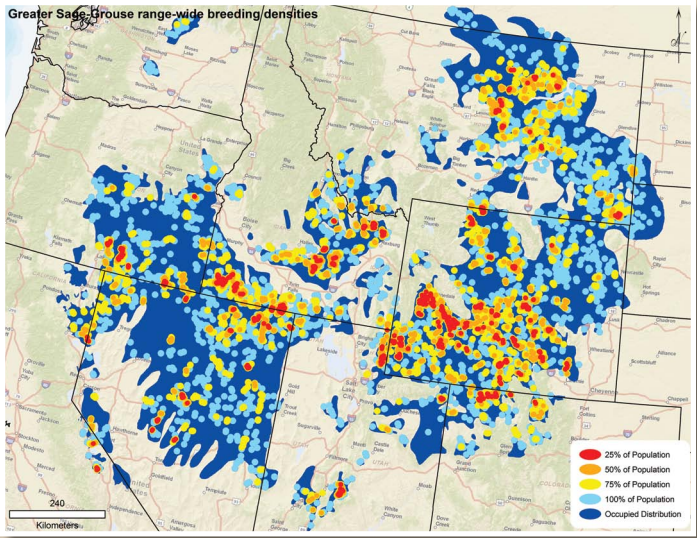
Let’s talk about Nevada for a second. You may have noticed that Nevada comes up blank or nearly blank on many of these maps. And no wonder—when we talk about Farm Bill we’re talking about the conservation of private lands. About 85 percent of Nevada is comprised of public land. This doesn’t mean there’s zero opportunity for Nevadans to benefit from the Farm Bill. In fact, with a big chunk of sage grouse core habitat in the northeast of the state, ranchers can make a real difference by marking livestock fences or participating in habitat improvements through the Sage Grouse Initiative.
Recreation in Rural America
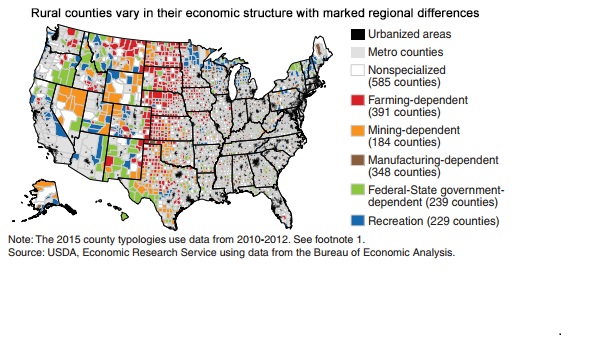
According to the USDA, 229 counties (in blue on this map)—ranging from Lake and Peninsula Borough, Alaska, to Monroe County, Florida—are economically dependent on recreation. That’s no surprise to sportsmen and women who have seen firsthand how hotels, gas stations, bars, and diners in rural and coastal areas empty out when the season’s over. This map shows a country where hunting and fishing support more jobs than the oil and gas industry. And the Farm Bill contributes to the complex conservation picture that supports this important $887-billion outdoor recreation economy.
We already know that hunters and anglers, regardless of political party, support conservation funding: 75 percent agree we should provide financial incentives to farmers and ranchers to implement habitat conservation on private lands, and 87 percent do not want to see cuts to conservation programs, in the Farm Bill or anywhere else.
These maps further show that support for Farm Bill conservation shouldn’t break along party lines or state lines. If you agree, follow us on social media as we enter the 2018 Farm Bill debate—because if Congress crosses the line and tries to cut these programs, we’re going to need your help.

